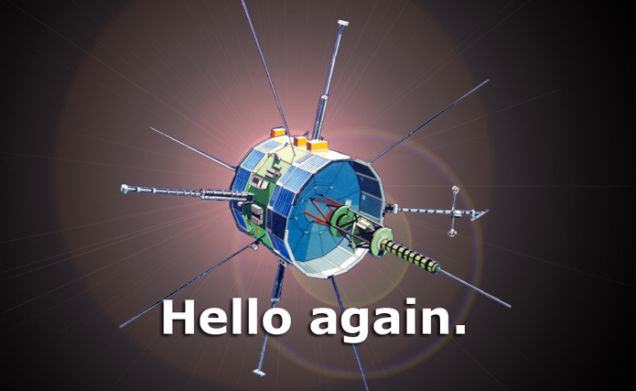How to communicate with a 36-year-old space probe using GNU Radio

In May 2014, a group of enthusiasts successfully established communications with the ISEE-3 spacecraft, which was launched in 1978, successfully completed its mission in 1999, and has since been mothballed.
Now the participants in this project have published instructions (and are ready to send the source code) so that anyone can repeat the experiment and send commands to the probe. Unless, of course, you have a sufficiently large satellite dish.
GNU Radio is a digital signal processing software. Programs on GNU Radio can be used with external antennas. For programming, the GNU Radio Companion visual environment or C ++ and Python libraries are suitable.
The communication system with ISEE-3 is quite simple. The main detail is the USRP N200 software-defined radio system , which connects to the laptop via Gigabit Ethernet.

The outgoing signal from the USRP radio system at a frequency of about 2.05 GHz (S-band) is transmitted to the room where the control equipment is installed with a satellite antenna. After processing with a 400-watt amplifier, the signal is fed to the antenna.
Enthusiasts used a satellite dish for transmission at the Arecibo Observatory.

Satellite dish at Arecibo Observatory
The authors say that the most difficult part was to sort through the hundreds and hundreds of pages of NASA documentation. They described everything from antenna design to signal modulation details to the layout of the earth communications system.
Signal transmission is performed using PCM / FSK / AM / PM modulation. The command size is 60 bits. First, the command is sent to the FSK modulator with a center frequency of 8.25 KHz and a deviation of 750 Hz.
In ancient times, engineers tried to make a radio receiver on a spacecraft as simple as possible. Therefore, instead of installing a clock recovery circuit on the probe, they transmitted a clock signal along with a command from the ground. It was modulated in AM with the FSK subcarrier. Thus, the subcarrier carried both a clock signal (amplitude, green graph in the diagram) and information for transmission (frequency, blue graph in the diagram). The FSK / AM signal (red graph in the diagram) was then modulated for a frequency of 2.05 GHz. The circuit was not designed for maximum energy efficiency or bandwidth.

For more information on signal modulation, see here . Authors will send the program code upon request.
